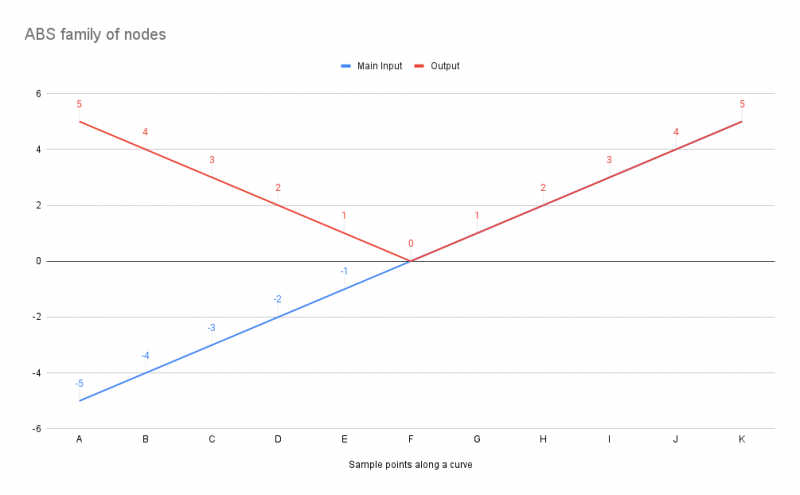Abs Scalar
Overview[edit]
The Abs family of nodes allow you to find the absolute value of the colour/scalar/vector coming into the Input. The absolute value of a number is its value regardless of whether it is positive or negative. In practice, this means the absolute value is always a positive number. For example:
-
The absolute value of 4 is 4
The absolute value -2 is 2
The absolute value of 0 is 0
This function works in a component-wise fashion for colours and vectors, so using vectors as an example :
-
( 2.1, -6, 4 ) becomes ( 2.1, 6, 4 )
( -10, -3, -2 ) becomes ( 10, 3, 2 )
In the example below, an EXR image containing vector data is assigned to the Main Input of the Abs Scalar node. Visually, the green pixels represent data above a value of 0 in the Y axis, whereas the magenta pixels indicate a blend of positive and negative values lying on the X and Z axis. When enabled, the Abs Scalar node outputs all values as positive values. When these modified values are interpreted by a Vector Displacement shader the deformations lean towards the positive direction and are no longer below 0 on the Y axis, or ground plane.
Settings:
- Name: This setting allows you to apply a descriptive name to the node, which can be helpful when using multiple Abs Scalar nodes in a project.
- Enable: When checked, the node is active and the absolute value from the Main Input is output. When unchecked, the Main Input value is passed through the node.
A scalar is a single number. 1, 200.45, -45, -0.2 are all examples of scalar values.
A vector is a set of three scalars, normally representing X, Y and Z coordinates. It also commonly represents rotation, where the values are pitch, heading and bank.
A single object or device in the node network which generates or modifies data and may accept input data or create output data or both, depending on its function. Nodes usually have their own settings which control the data they create or how they modify data passing through them. Nodes are connected together in a network to perform work in a network-based user interface. In Terragen 2 nodes are connected together to describe a scene.
A shader is a program or set of instructions used in 3D computer graphics to determine the final surface properties of an object or image. This can include arbitrarily complex descriptions of light absorption and diffusion, texture mapping, reflection and refraction, shadowing, surface displacement and post-processing effects. In Terragen 2 shaders are used to construct and modify almost every element of a scene.


